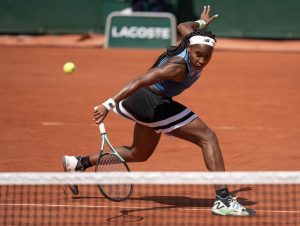At the moment, with the Laver Cup just having been played and two new “team” tournaments (the revamped Davis Cup and the ATP’s own suggestion of a “World Cup”) being proposed for tennis next year, it is possible to forget that tennis is actually an individual sport and not a team sport. Perhaps that is because the main events in tennis – the Majors – are over for the year and any other individual events that follow them, such as those in the autumn Asian swing, are inevitably bound to pale by comparison.
Another reason might be the fact that the Ryder Cup is currently capturing the world’s sporting imagination and tennis is desperately trying to find something – anything – that can come close to rivalling it. The Ryder Cup is undoubtedly an extraordinary event, one that captivates even self-professed non-golf fans (and even a few golf-haters). In part, that is because it is a matchplay event rather than a strokeplay event, whereby golfers actually face off against each other – individually or in pairs – in a way that they simply do not in normal tour events or even Majors. But another reason for the Ryder Cup’s success is surely its overall format, which is unique in all of sport in pitting one continent (or at least a large part of a continent) against another, as Team USA Team fight it out with Team Europe for global golfing supremacy.
As even non-golf aficionados will probably know by now (such has been the blanket media coverage), the Ryder Cup did not always have that structure. It began in 1929 as the USA versus Great Britain and Ireland. However, such was the absolute domination that the USA enjoyed over GB and Ireland that in 1979 the rest of Europe’s golfers, led by the singular Seve Ballesteros, were invited to join the British and Irish to form one European team. The rest, as they say, was sporting history and now, nearly forty years on from that fateful change to the tournament’s original format, the Ryder Cup organisers proudly boast that it is the third most watched sporting event in the world after the World Cup and the Olympics.
Indeed, such has been the phenomenal growth in interest in the Ryder Cup in the last four decades that other non-American and non-European golfers often admit to being jealous and frustrated that they cannot compete. There has been talk of admitting an Asian team, or even an Oceania team (comprised largely of Australian and New Zealand players). However, such has been the success of the current format that the Ryder Cup organisers will be wary of altering it, with the risk that any further change would diminish the simple “continent versus continent” rivalry, between Europe and America, that the Ryder Cup has come to represent.
However, if golf is wary of altering or expanding the existing Ryder Cup format to make it a truly inter-continental championship, perhaps tennis could do it instead. And it could do so by altering, and expanding, the existing format of the Laver Cup.
Last week’s Laver Cup in Chicago between Europe and the Rest of the World was only the second instalment of tennis’s newest team competition. Such is the current dominance of European tennis that Europe, once again led by Roger Federer (who was a prime mover in the creation of the Laver Cup in the first place), easily beat the Rest of the World. It is still nominally an “exhibition” event and as such most of the world’s interest has been focused on who Federer will pair with in doubles: Nadal last year; Djokovic this. But if it was to be transformed into a genuinely inter-continental championship, then tennis might finally have a global team tournament to rival the Ryder Cup.
Here is the modest proposal. Instead of the current two-team format of Europe versus the Rest of the World, the Laver Cup could become a four-team tournament, fought out between Europe, Asia, North America and South America. It would last an entire week, with two semi-finals and then a final. Using, for argument’s sake, the current Davis Cup model of having four singles matches and one doubles match, rather than what is currently the more confusing, even bloated format that the Laver Cup uses (with seemingly endless singles matches), it would be entirely possible to have four well-balanced, well-matched and above all genuinely competitive teams.
Based on current world rankings, the teams would look something like this. Europe would have the Big Three of Federer, Nadal and Djokovic, plus one other from Murray, Wawrinka or Cilic (depending on who was fit at the time). On the surface, such a team would appear unbeatable, but of course none of those players is a doubles specialist. As a result, if doubles was put at the heart of a revamped Laver Cup, there would have to be some compromises and perhaps even the radical selection of choosing a specialist doubles team rather than just great singles players. (The best current European team is undoubtedly France’s Nicolas Mahut and Pierre-Hugues Herbert, who have not only won Majors together but were instrumental in France’s Davis Cup triumph last year.)
The other three teams might look something like this. Asia might consist of Nishikori, Kyrgios, Chung Hyeon and De Minaur. (There is no obvious, stand-out Asian doubles team, so they might have to bring in other players such as John Milman to enable, say, Kyrgios and Nishikori to pair up.) South America would inevitably be Argentine-heavy, such is Argentina’s current pre-eminence in South America, with players such as Del Potro, Schwartzman and Pella. In the past, however, other South American greats such as Gustavo Kuerten and Marcelo Ríos would have demanded inclusion. And as for North America, despite the current travails of the USA (traditionally THE superpower of tennis) a team picked right now could include Raonic, Sock, Shapovalov and Johnson, as well as the best ever doubles pairing in history in the Bryan brothers.
Of course, the ITF is likely to look askance at the idea of another tennis team tournament, especially when it is still struggling to sell the idea of the revamped Davis Cup and faces the possibility of a direct competitor tournament in the form of the ATP’s “World Cup”, which is scheduled to take place from January 2020. But the point is that an inter-continental championship (whether in the guise of an expanded Laver Cup or in some other format) would be entirely distinct, pitting continents rather than countries against each other. Also, there would be no qualifying rounds, with just one week of inter-continental play each year.
Of course, there is an elephant in the room – or rather, an elephant that is not in the room – and that is Africa. As in golf, tennis has yet to produce a truly great African player who does not come from South Africa. The obvious reason for this is that both tennis and golf are both expensive and space-consuming to play; it is far cheaper and easier to play soccer, or even cricket or basketball, in the street or in a field than it is to play tennis or golf (especially golf). And yet one other advantage of an inter-continental championship is that it would focus the world’s, or at least the tennis world’s, mind on the complete lack of players and infrastructure in the vast majority of Africa. As a result, and given the burgeoning rise of the middle classes in Africa, it is not impossible that Africa would one day take its place in a truly global inter-continental championship of tennis.
Main photo from Getty






